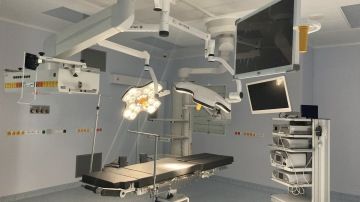New performance - test
Carpal tunnel syndrome is a condition in which the median nerve (nervus medianus) in the wrist is compressed. This nerve passes through a narrow channel in the wrist called the carpal tunnel. When a change occurs in this space, for example due to swelling or thickening of the tendon, the nerve is compressed, causing varying degrees of damage to it.
The origin of carpal tunnel syndrome
The carpal tunnel is a narrow space in the wrist through which nerves, blood vessels and tendons pass from the forearm to the hand. This tunnel is made up of the bones of the wrist and a strong ligament. The median nerve, the medianus, which passes through this tunnel, is surrounded by fine blood vessels that provide its nourishment. If there are changes in the tunnel, such as a reduction in its space, the blood vessels supplying the nerve are compressed, leading to the development of carpal tunnel syndrome.
Diagnosis of carpal tunnel syndrome is made on the basis of an examination of the patient and an EMG (electromyographic) examination, which assesses the conductivity of the nerves and locates any oppressions.
The main symptoms of carpal tunnel syndrome include:
Nocturnal tingling of the fingers.
Impaired fine sensation and pain shooting into the elbow or shoulder.
Difficulty grasping and holding delicate objects.
Morning hand stiffness and numbness in the fingers.
Deteriorating hand motor skills and loss of thumb muscles.
Carpal tunnel syndrome can be caused by a number of factors, including:
Overloading the hand with inappropriate or heavy work.
Diseases such as rheumatoid arthritis.
Injuries and fractures causing swelling and thickening of the tissues.
Metabolic disorders such as diabetes or thyroid disease.
Cancers or birth defects.
Progressive arthrosis.
In the early and mild stages, carpal tunnel syndrome can be treated conservatively, for example:
Using splints.
Using injections and medications to improve blood flow and nerve quality.
Rehabilitation to improve nerve mobility.
Surgical intervention is recommended for ongoing difficulties or worsening EMG findings. The surgery, performed under local anesthesia, involves releasing the carpal ligament, which reduces pressure in the carpal tunnel. After surgery, night-time difficulties usually resolve immediately, while other symptoms improve gradually over several months.

Team of surgeons
MUDr. Robert Frei
Head of outpatient clinic Orthopaedics
Further information on procedures
The procedure is performed under local anaesthesia.
The patient is instructed how to rehabilitate and care for the hand. The stitches can be removed at home and a follow-up is usually done one month after surgery. Disability usually lasts for three months but can be longer, depending on the type of work and the severity of the condition.
After the operation, the hand is placed in a plaster splint, which is worn for approximately 10 days. Subsequently, scar care begins, with a wrist bandage used during the day and a special gel sleeve at night. The load on the hand is increased gradually, and full weight bearing can usually be allowed after three months, depending on the results of a follow-up EMG.
How our clients rate us
Minimally invasive, maximum care
One-day surgery is a concept that involves non-emergency surgical procedures. Its advantage is quick recovery and minimal pre- and post-op stress.
A modern and comfortable environment
Our clinic is designed with your comfort and safety in mind. We combine modern technologies with a friendly environment to make every visit as pleasant as possible. Come explore our premises, which are as enticing as they are functional.
Are you interested in an examination for the procedure?
Contact our clinic.
Client line: +420 222 900 900








